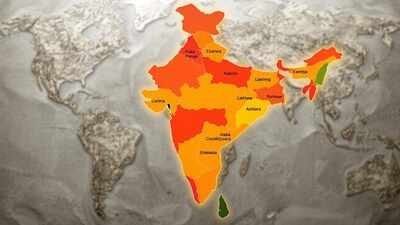Delhi schools rise in national rankings: What are the driving factors behind the big score boost?

Delhi has shown a significant improvement in school education performance, moving up from the Akanshi-1 grade in 2022-23 to Prachesta-3 in the Performance Grading Index (PGI) 2.0 for 2023–24. The PGI, prepared by the Department of School Education and Literacy under the Ministry of Education, Government of India, evaluates states and union territories (UTs) on a comprehensive scale of 1,000 points across various domains of school education.According to the latest PGI report released on June 19, 2025, Delhi registered a notable 44-point improvement in its overall score, rising from 579.3 in 2022–23 to 623.7 in 2023–24. This uplift elevated the national capital from Akanshi-1 (21%–30% performance band) to Prachesta-3 (31%–40% band), indicating measurable progress across several education parameters.
Sharp gains in infrastructure and governance
A parameter-wise analysis of Delhi’s performance reveals that the capital made substantial progress in infrastructure and governance-related indicators. Its score in the Infrastructure and Facilities (IF) domain rose from 84.7 in 2022–23 (Prachesta-2 grade) to 117.9 in 2023–24, qualifying for the Uttam grade (61%–70%). Similarly, Delhi’s Governance Processes (GP) score improved from 39.3 to 48.9, allowing it to climb from Akanshi-1 to Prachesta-3 in that domain.In the Teacher Education and Training (TE&T) parameter, Delhi showed a modest yet positive shift, increasing its score from 86.0 to 89.6, maintaining its position in the Utkarsh grade (81%–90%). Notably, the city-state sustained its high performance in the Equity (E) parameter, improving marginally from 236.6 to 239.1 and remaining in the Daksh category, which represents the top performance band (91%–100%).
Mixed performance across learning outcomes and access
Despite these gains, Delhi’s performance remained stagnant in the Learning Outcomes and Quality (LO) domain, with a consistent score of 63.8, continuing in the Akanshi-1 category. There was a slight decline in the Access (A) domain, where Delhi scored 64.4 in 2023–24, down from 68.9 in the previous year, slipping from the Utkarsh to Atti-Uttam grade. This suggests that while efforts to improve educational facilities and teacher training have borne fruit, there is still work to be done in enhancing learning achievements and ensuring better access.
National performance trends: A comparative analysis
Delhi’s progress stands out in a year where only one UT—Chandigarh—managed to reach the Prachesta-1 grade (701–760 points). With a score of 703, Chandigarh became the sole region to attain the 51%–60% band. In contrast, no state or UT reached the higher PGI grades of Daksh, Utkarsh, Atti-Uttam, or Uttam. Ten states/UTs, including Delhi, Punjab (631.2), Gujarat (614.4), Odisha, Kerala, DNH&DD, Haryana, Goa, Maharashtra and Rajasthan, were placed in the Prachesta-3 category (581–640 points).Delhi’s improvement also mirrors national progress. Out of 36 states and UTs assessed, 24 showed improvement in their PGI scores compared to the previous year, while the remaining 12 saw a decline. The steepest declines were reported in Andaman and Nicobar Islands (-43), Chhattisgarh (-39), and Lakshadweep (-33), while Delhi recorded the highest gain.
PGI 2.0 grading structure and its significance
The PGI 2.0 framework evaluates education systems across six domains—Learning Outcomes and Quality, Access, Infrastructure and Facilities, Equity, Governance Processes, and Teacher Education and Training—covering 73 indicators. Scores are grouped into ten grades, ranging from Daksh (91%–100%) to Akanshi-3 (up to 10%). These categories are designed to encourage evidence-based monitoring and policymaking across states.The Education Ministry attributes the overall improvement in PGI scores to policy interventions like the Look East strategy and a stronger focus on data-led planning and governance reforms. The PGI-D, a district-level assessment under PGI, also showed similar trends: the number of districts in the lowest Akanshi band dropped significantly from 23 to one (Meghalaya), while those in the Prachesta-1 category increased from 204 to 281.Delhi’s leap from Akanshi-1 to Prachesta-3 in the PGI 2.0 2023–24 marks a promising turnaround in its school education performance. While challenges remain, especially in learning outcomes and access, the capital’s strides in infrastructure, governance, and equity signal a shift towards more targeted and outcome-oriented reforms in education.





